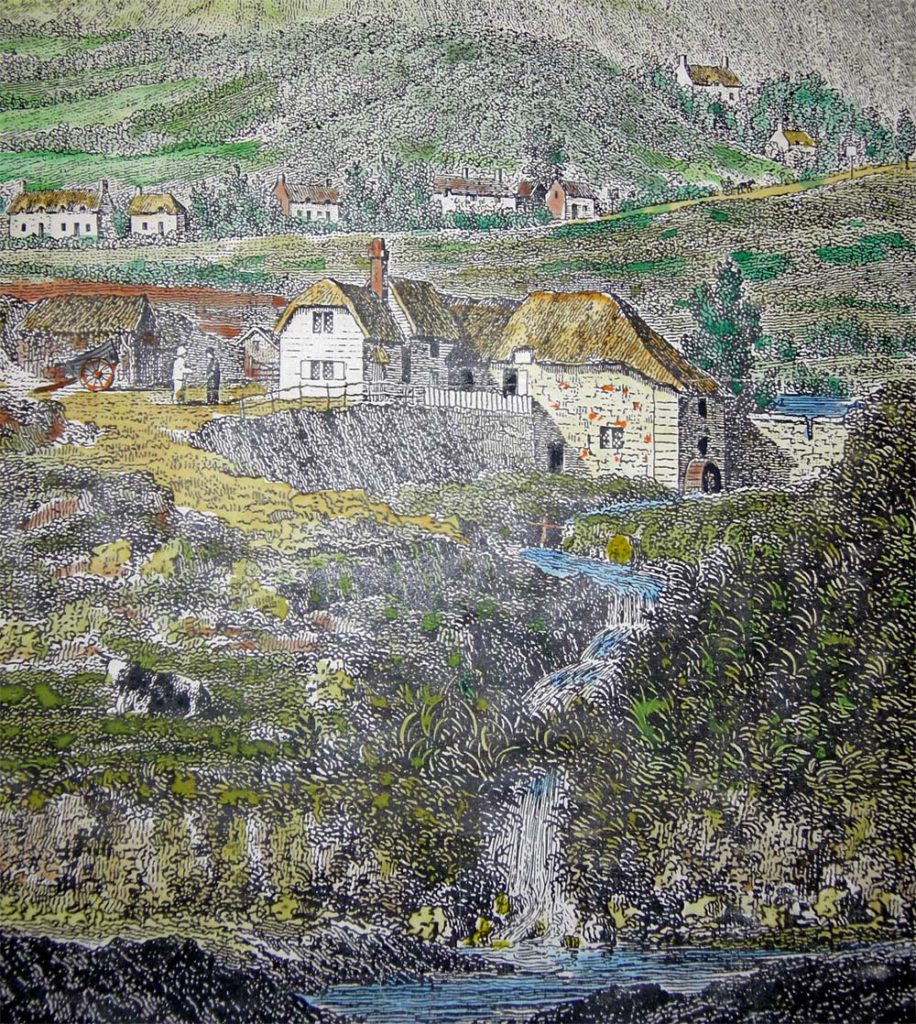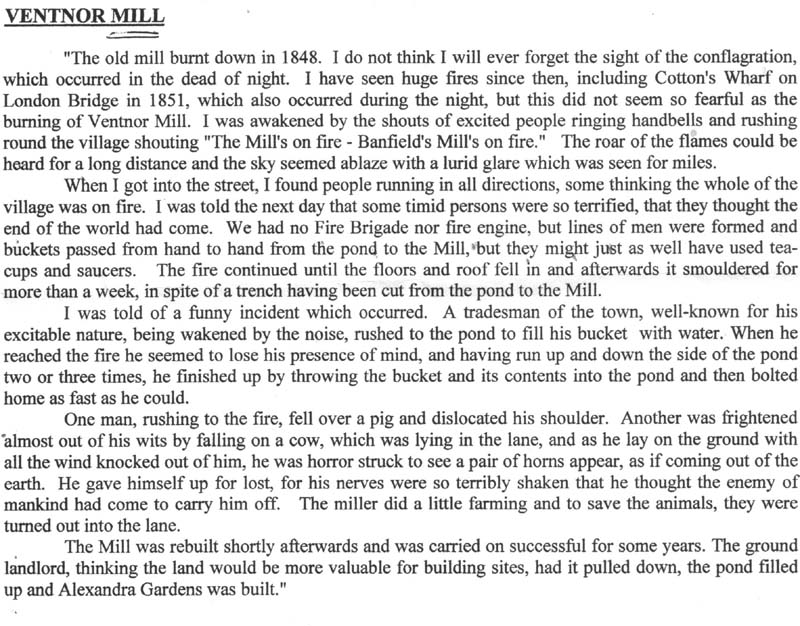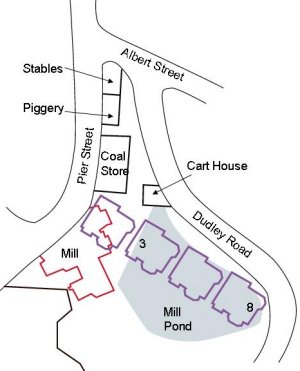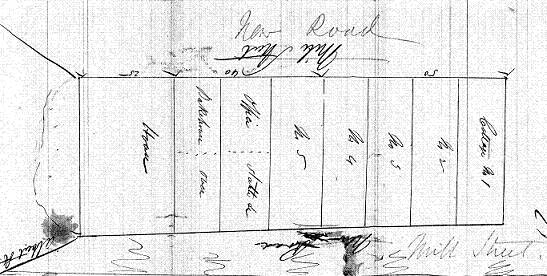Ventnor Mill becomes Alexandra Gardens
Alexandra Gardens and Parade were built on the Ventnor Mill site and pond. The exact position of the Mill was at the western end of Alexandra Gardens. The main body of the Mill and wheel can be placed in the gardens and road outside numbers 1 and 2, and just edging into the garden at number 3.
The Mill site also included the pond, now houses 3 through to 8, a cart house was placed to the rear of number 3 and various outbuildings including a stable, piggery and coal store were sited on what are now shops in Alexandra Parade on the east side of Pier Street (shown as Mill Street in the plan below).

Ventnor Mill pre-1848
(engraving courtesy: Ventnor Heritage Museum)
The stream that turned the wheel ran from St. Boniface Downs, down to where 1 and 2 Alexandra Gardens are at present. The stream was diverted into ‘The Triangle’, known now as the Cascade, in 1902.
The first reference to a Mill at Ventnor was in 1327 in a Feudal Aid Account. From 1327 to its demise in 1875 it is likely that the Mill had been rebuilt on a number of occasions, the last time being after the fire of 1848.
Local historian at the time William Mew Judd was a witness. In a lecture at the Royal Marine Hotel he described the fire:

It is clear from the ‘Abstract of the Title Deeds, of 1848’ that after the 1848 fire ‘….of very destructible character’ the Mill was rebuilt.
At this time John Hambrough owned much of the land in Ventnor including the Mill and site. In September 1848, Charles Banfield the tenant and miller, with architect Thomas Stanley, brought the lease to Ventnor Mill site, pond and stream. Hambrough placed a number of covenants on the purchase. One covenant was for Banfield and Stanley to rebuild the Mill on the existing foot print, incorporating the remains of the old foundations and walls. By 1853 the Mill had been rebuilt and was operational. Banfield Let the Mill, on a ten year lease, to Francis Buckell for £110 per annum.
Banfield was also contracted to remove, by covenant, the out buildings, stable and piggery, on the ground which now sites Alexandra Parade. This area was cleared by 1849 and five cottages, an office, bake house, oven and shop and Banfield’s new house replaced the old outbuildings.
Charles Davis worked the Mill from 1867, he was the last reported miller to work the Mill. Charles Davis was the Baker back in 1850 and worked at the previously mentioned bake house. The Mill was still operational in 1870, when a report from December that year recalls Davis’s 10 year old stepson was working near the side of the bolting mill, Davis, the miller, went to pass on a message and whilst he was away the lad fell in the grain. A verdict of accidental death was recorded.

The location of the Mill and the rest of the buildings in relation to the present houses

Alexandra Parade plan copied from original located at the Newport records office
By 1868, Henry May, then of Woodlynch, Bonchurch, had acquired the site for £2000. Seven years later he bought the under lease, the final part of the site, which was held by Charles Banfield, the previous owner, for £5, with a view to developing the area. It would seem that he was unsure how to move the development forward and in 1874 requested input from the Local Board (town planning). The Local Board members continued to discuss the development, at meetings, for a further year.
The Mill was finally demolished in 1875. At this time Henry May started to raise the capital to develop the Mill site. He deposited the title deeds relating to his freehold as security for a financial advance.

